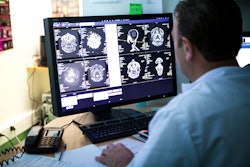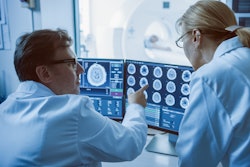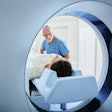Investing in the well-being of their staff radiologists pays dividends for institutions in the form of better patient outcomes and tangible benefits to healthcare systems, according to an opinion article published on 5 July in the European Journal of Radiology.
Dr. Fausto Labruto, PhD, head of emergency radiology at Telemedicine Clinic (academy.unilabs.com/radiology/mentors/529/fausto-labruto), wrote that research has shown that radiologists who are happier not just with their jobs but overall are more attentive, productive, and resilient, with reduced risk of diagnostic errors and greater engagement with their work. While healthcare systems face increased financial constraints, they must also prioritize “nonmonetary forms of value” -- including work satisfaction, personal development, and happiness -- to attract and retain skilled staff, he noted.
Labruto is a keen advocate of fostering a work environment that promotes satisfaction and happiness for staff. He thinks practical measures can help to avoid stressors such as interruptions and inefficiencies (e.g., hiring support staff to handle and prioritize communication and routine tasks to free up radiology staff for specialized work, improving workflow and patient management, and ensuring adequate staffing -- which may include incorporating teleradiology).
In addition, Labruto supports the use of AI for the management of some tasks, but with the caveat that the use or overuse of AI has been associated in a recent study with increased risk of burnout among radiologists.
While work-life balance is traditionally emphasized, he suggested that "work-life blending," in which staff have flexibility in interweaving personal and professional sections of life, may suit an employee better.
“Supporting radiologists in tailoring schedules to their personal needs -- whether through flexible hours, remote work options, or recognizing diverse life stages -- can improve satisfaction and overall happiness,” noted Labruto, who previously was associate professor of radiology at the Karolinska Institute in Stockholm and head of ultrasound at Karolinska University Hospital.
He stressed that positive social connections in the workplace are also critical for fostering happiness with one’s work, noting that a workplace with a toxic, unsupportive culture can undermine other positive factors -- reasonable workloads, efficient workflows -- in promoting employee happiness. This can include not just discrimination and bullying, both of which employers have increasingly become aware of and addressed, but also isolation.
Isolation has increased with the advent of remote reading and greater subspecialization, Labruto continued. This can result in a decline in interpersonal work relationships and depersonalization, which may lead to a heightened risk of burnout. “Departments seeking to enhance happiness should therefore actively avoid compartmentalization and instead foster a sense of collective purpose.”
He suggested that moving the organization from a hierarchical model to a more team-oriented one may improve quality of work and well-being, with peer-review systems, double-reading of reports, and similar collaborative approaches offering both increased accuracy and a strengthened sense of collective responsibility and respect. In addition, it allows employees to learn from each other and from their mistakes in a supportive process, and underscores inclusivity.
Furthermore, ensuring social activities become part of departmental life may strengthen team identity as well, according to Labruto. Active participation with a team can reinforce a staff member’s sense of having meaningful work and giving him or her a sense of purpose, as can mentorship programs and opportunities and protected time for professional and personal development.
Use of metrics
He noted that the metrics used for the measures employers take to increase the happiness of their staff may require finesse, although some are straightforward: staff absenteeism and turnover, for example, are often cited as reliable measures of staff satisfaction with the job and its culture.
Another useful metric may be the perception of time: studies have shown that those who enjoy their work perceive their workday to pass more quickly. Short surveys about the workday could provide “snapshots” of satisfaction, he added.
Labruto recommended that employers monitor these measures over time to follow trends and check in regularly, as job satisfaction is a dynamic thing that can shift with changes to management, policies, workload, the team itself, and external factors. Allowing for anonymity in surveys or providing options to report concerns anonymously can also provide effective avenues for employees to supply important information to employers about the emotional temperature of the workplace. Offering anonymity can help foster trust and prevent bias in self-reporting, he wrote.
Organizations can act to support the well-being and happiness of radiology staff, but ultimately it is not entirely up to the organization, he continued. It is also the responsibility of individual radiologists to treat workplace happiness and fulfillment as a fundamental aspect of their professional success and to make choices that both prioritize fulfillment and benefit the wider radiological community.
“In short, embracing happiness as a legitimate goal -- at both institutional and individual levels -- can pave the way for a healthier, more sustainable, and ultimately more effective practice of radiology,” Labruto.
The EJR opinion paper may be found here. Editor's note: the picture used on the homepage to introduce this article show a generic photo of a happy healthcare professional.



















